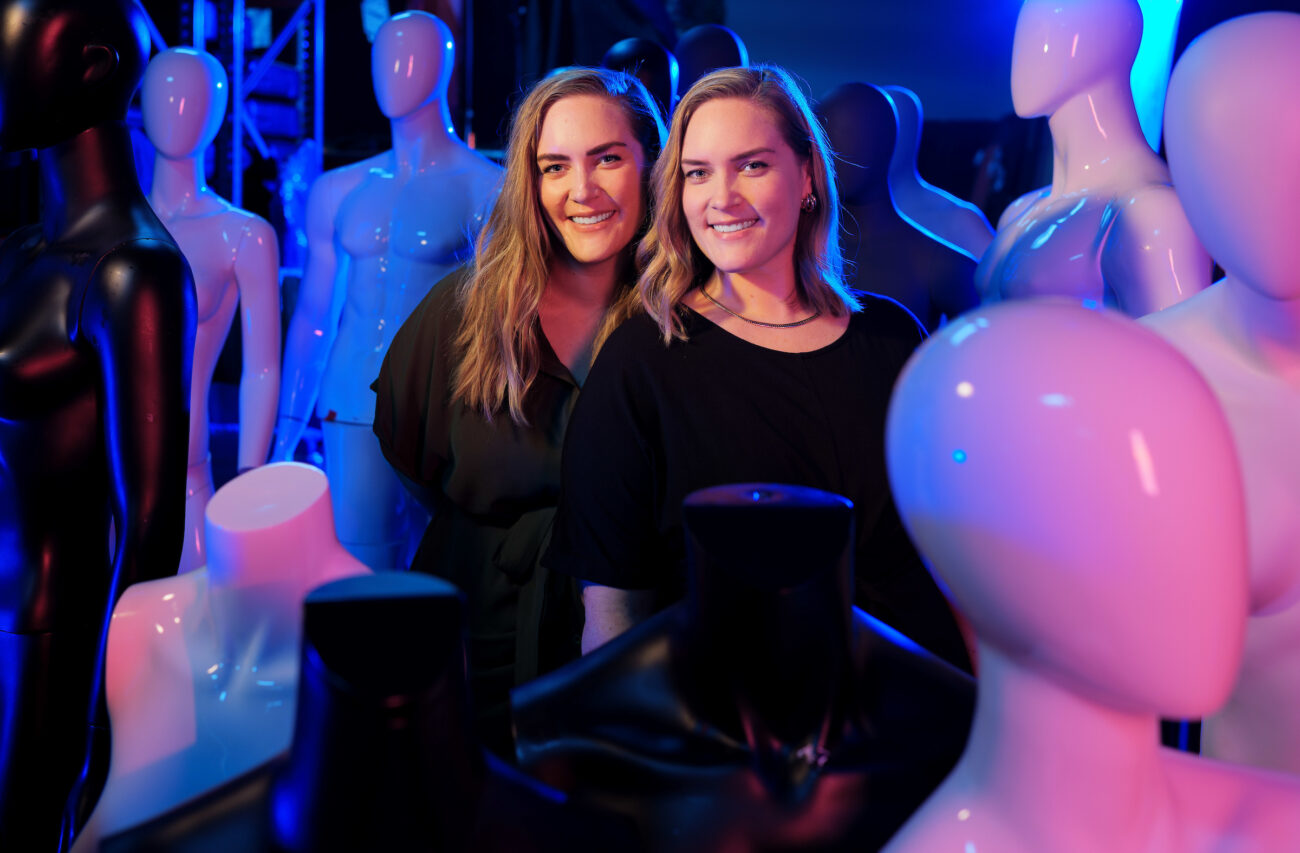A Tale of Two Injuries
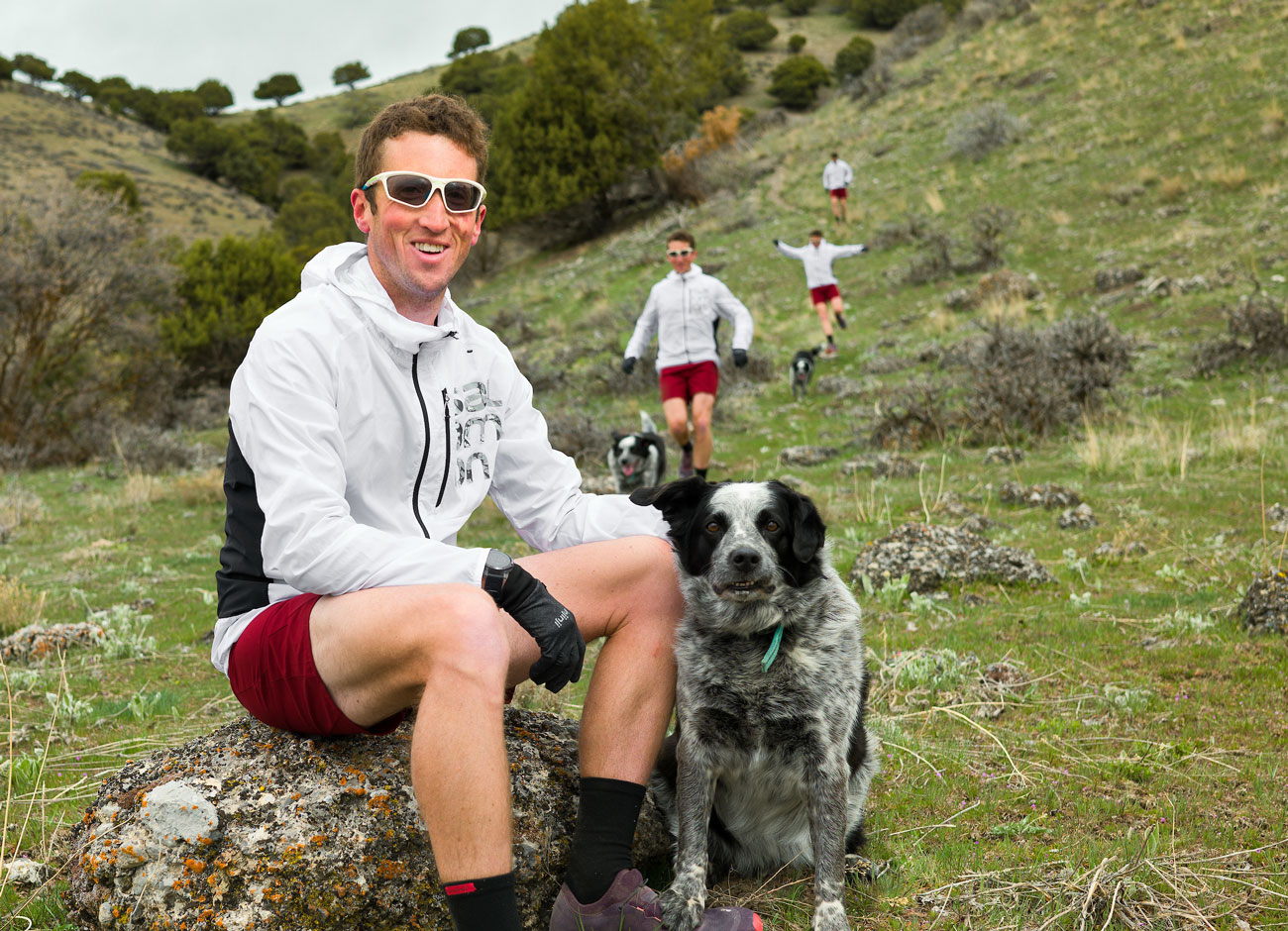
We’ve all been there. In the middle of a long drive, broadsided by that feeling of dread when you read a mileage sign that proclaims you’ve still got hours behind the wheel.
But for Michael McKnight ‘16, after driving a couple hours south from Cache Valley to Moab in October 2017, a glance at Google Maps showed he had more than 180 miles to go. That’s when it struck him. He was driving 180 more miles that day, just so he could navigate his way for another 240 miles. On foot.
“I remember looking down and seeing the distance we had to drive to Moab was shorter than what I was about to run,” McKnight recalls.
Of course, Mike McKnight has a way of turning hard things into things he actually wants to do, no matter how much it punishes his body. But to get to the point of becoming one of the country’s premier ultrarunners, McKnight had to take a first step. And that inaugural step came along a lonely country road on a cold winter day in the tiny farming community of Cornish, Utah.
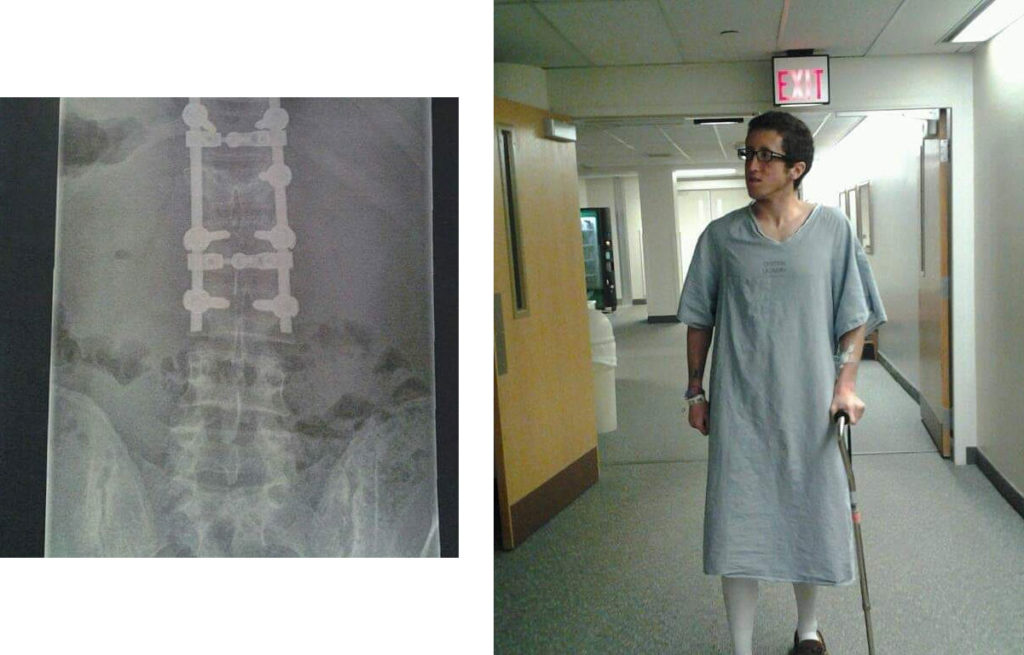
And for the man who has since completed nine 200-mile races and traversed the 486-mile-long Colorado Trail in just over a week, it required the help of his grandmother’s walker.
When McKnight was a 22-year-old student at Utah State University, he loved to ski so much that he and a few friends planned their schedules so they could attend school on Tuesdays and Thursdays, leaving all but Sundays open for hitting the slopes at Beaver Mountain Ski Area. On an icy snow day in February 2012, the friends were honing their skills at one of the site’s terrain parks when, “we meet a girl that we were all showing off for.”
In an effort to impress, McKnight got too aggressive on a table top jump he had gone off of numerous times before. Rather than carve his way into the jump, he says he “just hit it dead on.” McKnight quickly realized he had too built up too much speed and was certain to overshoot his typical landing spot. He panicked, falling backwards hoping to avoid the jump, but instead launched off it awkwardly.
“I landed flat on my back,” McKnight says. “It was an icy day, so it was like concrete.”
In brutal pain, McKnight immediately realized that something was wrong, and scared that he was paralyzed, started crawling around on the snow to make sure he could move his limbs. Then came screams of agony as McKnight awaited a Ski Patrol-assisted tobaggon ride to an ambulance. That night, an X-ray revealed that McKnight shattered his L1 vertebra, and during surgery the following day, two rods and nine screws were inserted in his back and a part of his hip bone fused to his spine in an effort to repair the damage. He was lucky.
“The way my L1 veterbra burst, it burst 100 percent away from my spinal column,” McKnight notes. “If I had landed a little differently … and it had shattered towards my spinal column, it would have paralyzed me.”
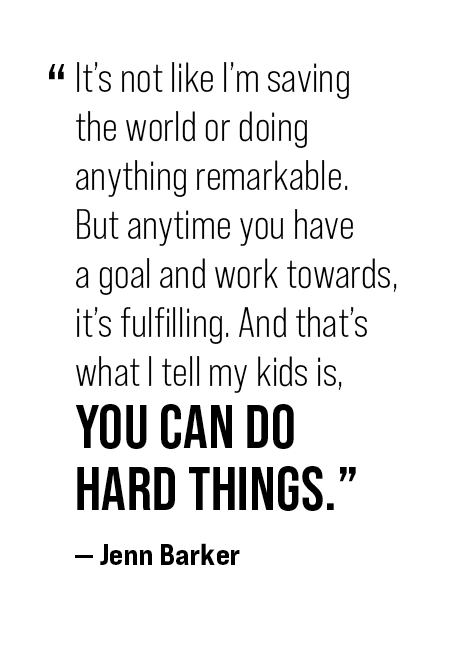
But being “lucky” still required McKnight to defer his college courses for a year and move back in with his parents who surrendered their bedroom so he could have easier access to the bathroom and a television. The expectation was that he might be able to do non-impact exercises like swimming in another six months and perhaps run again in a year.
But first, McKnight was instructed to try and walk a mile each day while wearing the brace custom-made for his torso. So, in between sleeping in in the morning and watching TV all afternoon, he would slip on his old Sky View High School track hoodie and gingerly make his way down that deslolate road, using a wheeled walker for support.
‘This Isn’t Good’
At the time of her own accident, Jennifer Barker was a 37-year-old wife and mother of four children who was simply standing on the sidewalk.
A recreational runner, Barker was out jogging on the morning of March 6, 2019. It was still rather dark around 6:45 a.m. when she arrived at the corner of Wasatch Drive and Constitution Avenue in Evanston, Wyoming. She was running a new route with two new friends she met at church, and unsure of where to go, she stopped briefly to take a drink. One of her friends, Holly Slade-West, stood next to her, as Kira Heflebower, closed in.
At the same time, a semi-truck heading west along Wasatch Drive in the inside lane of the four-lane road, began turning right onto Constitution. Unfortunately, there was a pickup in the right lane, and the two vehicles collided. The road was covered with a thin layer of ice.
Barker’s memories of the next few seconds – and the next few days – are nonexistent. While the back of the bed miraculously missed Slade-West, it made direct contact with Barker’s left side and knocked her into the road.
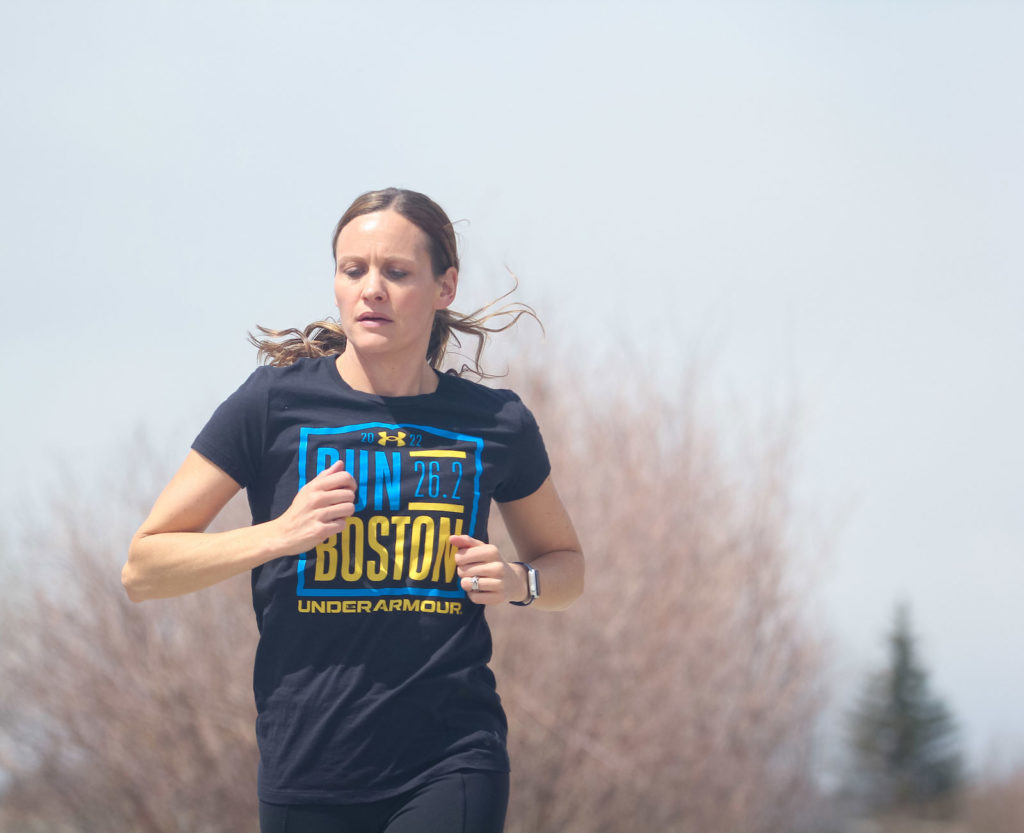
“Holly said, ‘I turned around and you were gone,” Barker says.
Jenn’s husband, Dean Barker ‘04, later spoke to a driver taking his child to school. “They thought it was a street sign flying in the air,” he says quietly. “But it was her.
“The pickup driver actually tried to turned into the semi to try and avoid them,” he adds, “but he fishtailed around and just picked her off. Tossed her. There’s a picture of the truck with a big dent in the back.”
An engineer for the city of Evanston, Dean was still home asleep when he got the call about the accident. He phoned his mother, who came to stay with the children, while he and his brother, Roger, raced to the hospital. They beat the ambulance, so he was standing by the emergency room doors when they brought Jenn inside.
“I actually knew both ambulance guys with her, and they looked at me this kind of look like, This isn’t good,’” Dean recalls.
Jenn Barker was moving, however, also fighting against those trying to treat her. Dean says she was “like a zombie” and didn’t understand what was going on. Following some preliminary tests, the doctors intubated Barker and quickly requested an AirMed flight from Evanston to the University of Utah Hospital.
By all accounts, Barker didn’t look like she had been hit by a truck when she arrived in Salt Lake City. But while there were significant cuts or bruises, it was determined that she had a broken sacrum (the bone at the base of your spine) and was suffering from brain bleed. Later, it was also discovered she had a fractured temporal bone which led to hearing loss in her left ear. The focus was on Barker’s brain hemorrhage she was released from the hospital after just six days.
“At the time, six days felt like a really long time,” Barker says. “But we have some friends who have had similar head injuries, and they were in the hospital for months. So, I feel super blessed.”
Dean Barker admits than during the 80-mile drive to Salt Lake City that he “had the feeling that even if she survives this, she’ll never be the same.”
“She recovered so quickly; like it was miraculous,” Dean continues. “We’re faithful people, and we feel like obviously God had his hand in it. But everybody was surprised at how fast she recovered.”
“My mom passed away a couple of years ago, so I really just think that she was there doing something,” Jenn states. “I don’t know why it had to happen that way, but I felt like I was very much protected from how much worse it could have been.”
But it was still a difficult road for Barker. For months she had a lot of pain, particularly in her back, and required extensive physicial therapy. And she couldn’t lift anything, a difficult request for a mother with an 18-month-old daughter.
The former Jennifer Griffiths grew up in Layton and earned her bachelor’s in business information systems and marketing from USU where she met Dean. Eventually, they moved their family to his hometown of Evanston about 18 months before her accident. Barker admits that it wasn’t exactly her dream, but she was overwhelmed by the outpouring of compassion and support from those around her.
“We’re just surrounded by an amazing community and family,” she declares. “I just hadn’t been here all that long. … It wasn’t where I grew up, and I didn’t have quite the love that Dean did. But the accident definitely changed my perspective of Evanston, and how people can rally together in a community when something happens.”
Long-distance Relationships
In high school, Mike McKnight couldn’t wait for summer vacation to end. He desperately wanted to play football for Sky View High School, but preseason practices often meant getting up at 2 a.m. to milk the cows then driving 20 minutes for football practice at 7 a.m. He would return home to move pipe and milk the cows again at 2 p.m. before the evening session of football practice, finally getting to bed around 10 p.m.
But perhaps that’s what helped prepare him for the sleepless life of an ultrarunner. Because it apparently wasn’t running spring track for the Bobcats.
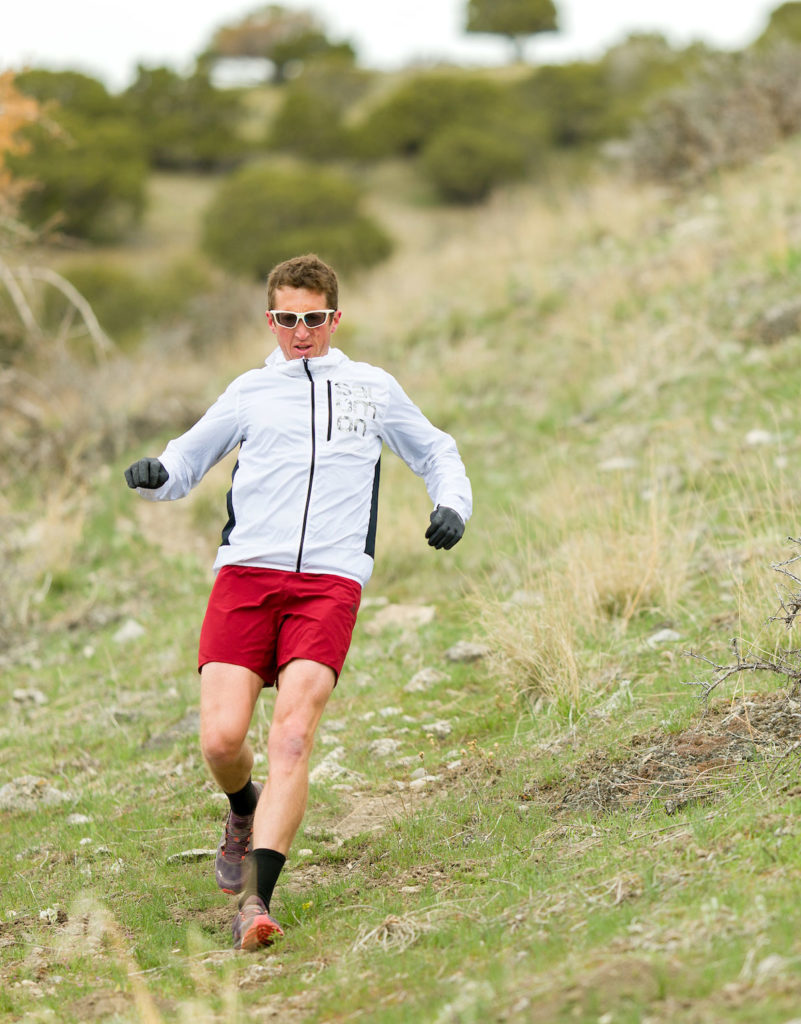
“Everyone else hated going back to school, but I looked forward to it because I could start sleeping again,” McKnight says.
“I actually hated running back then, and I sucked at sprinting,” McKnight says. “I didn’t really like the 3200, but I was decent at it.”
What he did enjoy about running, however, was that it helped him lose weight.
“I grew up overweight,” he says, “… and running was kind of the first thing I started doing to take a step towards a healthier and active lifestyle. So, it was a pivotal thing for me. It … helped me get a lot of confidence.”
After graduating, McKnight served a two-year mission for the Church of Jesus Christ of Latter-day Saints in Toronto before pursuing a bachelor’s in social work at USU. The ski jumping accident pushed back school another year and cost him his job because the assumption was that he wouldn’t be able to function normally for potentially a year.
But while alone out on that long piece of cold, decaying asphalt in Cornish, McKnight found new ways to challenge himself – walk the mile faster than the day before, walk without the walker, walk two miles instead of one. Within three weeks, he was walking six miles a day without the walker. McKnight carefully started jogging, “And I ended up running a half mile, and it didn’t really hurt anymore or seem like it was doing any damage. So, I just started running a half mile a day.”
From there, the distances quickly grew from notable to surreal. Six weeks after his accident, he ran the Braveheart Charity 10K at USU with his brace on, then moved back to Logan and started running five to 10 miles a day because he didn’t have classes or a job. And when he did get a job that July, a co-worker named Cody Draper was training to run the Bear 100, a popular ultramarathon that starts in Logan and finishes at Fish Haven, Idaho, near the shore of Bear Lake.
“Cody was the one who introduced me to the ultrarunning world; I didn’t even know it existed,” McKnight notes.
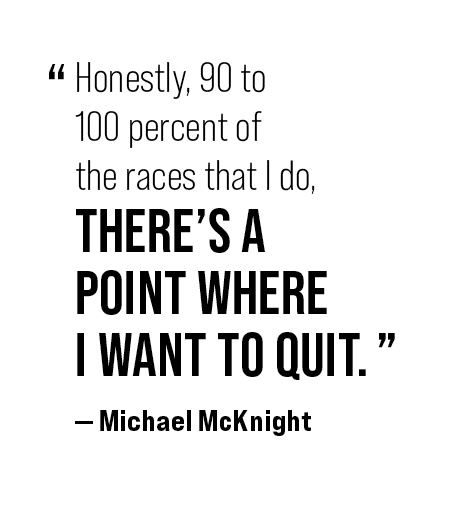
In the summer of 2013, he completed the Logan Peak Trail Run, took on a 50K later that year, then ran a 100K and completed his first Bear 100 in 2014.
“I was just exhausted,” he says of finishing his first 100-mile race. “I remember going home that morning and passing out … It wasn’t really that great of a feeling after my first 100. But after a couple of days, I started to feel good about myself.”
That feeling led to McKnight running three more 100-mile races over the next two years, and during that time, he met his future wife, Sarah Stevenson at a barbeque. A native of Virginia, Sarah studied music therapy at USU. Around the time the two started dating, McKnight made another discovery.
“I heard about this guy who ran the Bear 100 course backwards, slept at the start line for a couple of hours, then woke up and ran the race,” McKnight says. “And he ended up only an hour and a half after me, which was honestly kind of embarrassing. So, that sparked something in me that got me thinking it might be a cool goal to run 200 miles one day.
“So, I shared that with Sarah, and she told me, ‘Your goal sucks,’” McKnight adds with a laugh.
Road Work
Much like McKnight, Jenn Barker’s love of running developed over time. She was a soccer player growing up and spent a year playing for Bridgewater State University in Massachusetts. But the lure of being closer to family and friends was too much, and she enrolled at Utah State in the fall of 2001, where she soon met Dean, who was studying civil engineering. Jenn graduated in 2005, with the first of their four children coming along soon afterwards, as well as a newfound love of running.
“I needed something to go and do away from the kids,” she says. “Then it becomes personal goals, and once you start doing races and stuff, it becomes pretty addictive and fun.”
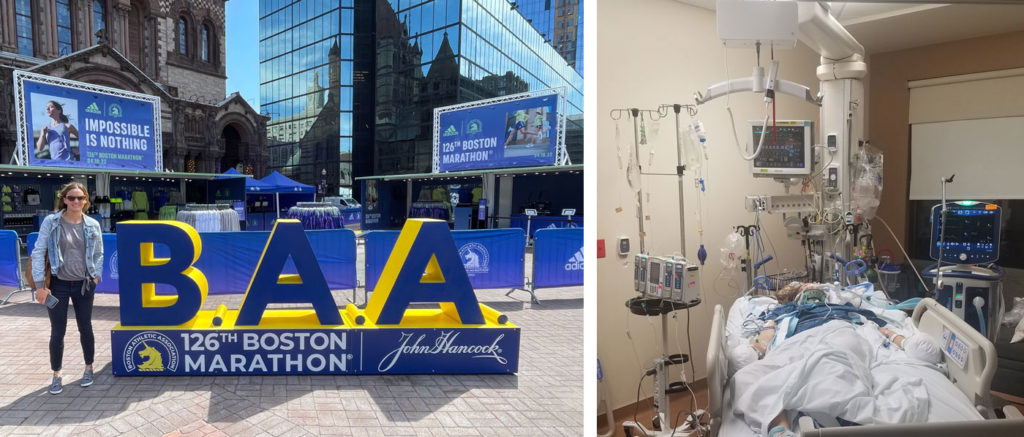
Barker completed her first marathon, the St. George Marathon, about nine months after her first child was born, and she ran a couple more full marathons before her accident in 2019. Because she has no memory of the getting hit by the truck, she didn’t realize how dire her condition was until she heard Dean and her sister talking about it later.
“I actually thought I was going to be able to run the Salt Lake Half Marathon about six weeks later,” Barker says. “Then I heard them talking, and I was like, ‘Wait. You thought I was going to die?’”
A year after the crash, she and her two friends ran the same fateful route. In the back of her head, Barker always had a “big bucket list” item – running the Boston Marathon, since watching the race come through town her first year of college. And since she was turning 40 in 2021, she realized that gave her another five minutes to qualify heading into the Big Cottonwood Marathon last October. Barker completed it in 3 hours and 28 minutes, easily qualifying for the hallowed Boston Marathon in April.
“Sometimes I think, Why do I care so much about it? It’s just running. It’s just a race. It’s not like I’m saving the world or doing anything remarkable,” Barker muses. “But anytime you have a goal and work towards it, it’s fulfilling. And that’s what I tell my kids is, ‘You can do hard things. Through hard work, you can achieve a goal no matter what it is.’”
The Dark McKnight
In the 10 years since he broke his back, Mike McKnight has twice won the sport’s Triple Crown – completing the Bigfoot 200, Tahoe 200, and Moab 240 in the shortest combined time – in both 2017 and ’19. Two years later he returned to set course records in all three of those events.
Additionally, McKnight’s completion of the 486-mile-long Colorado Trail in 2020 in seven days, 13 hours and 16 minutes bested the previous fastest known time for a supported runner by nearly an entire day. And then there’s the 100-mile traverse in 2021 of a course around Cache Valley that he ran while taking in zero calories.
In 2017, McKnight embraced a low carb-high fat approach that trains athletes’ to burn fat more efficiently. And having to take in fewer calories all but eliminated McKnight’s tendency to suffer from nausea and other digestive issues that sometimes led to “bonking” during a race. That 100-mile run was simply a personal effort to see if it was possible.
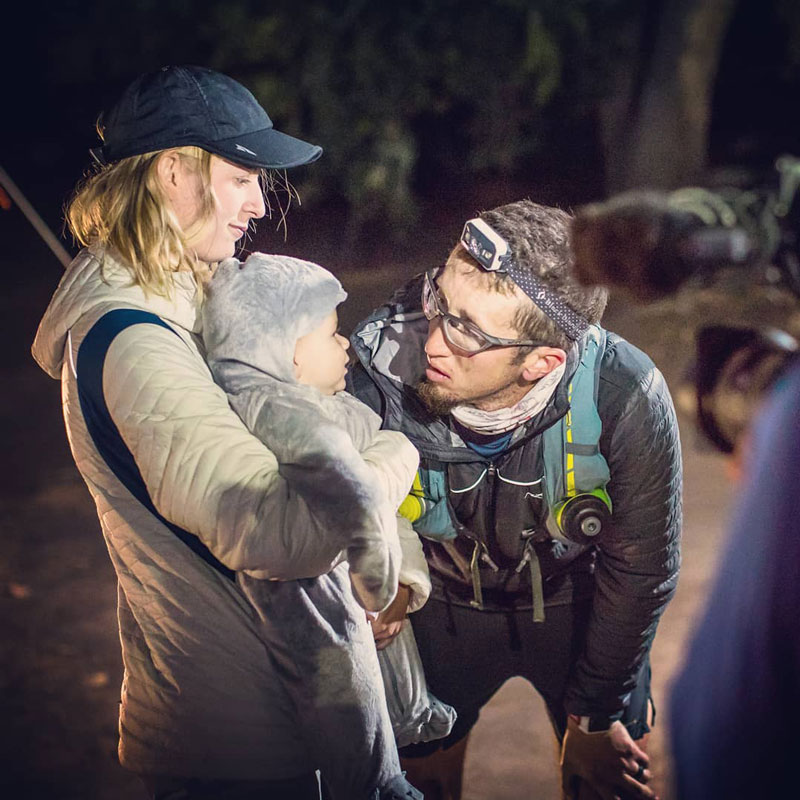
“Ever since going super-strict with it in mid-2018, I’ve seen nothing but positives,” McKnight says of his diet, which is still somewhat controversial in the ultrarunning world. “Performance-wise and recovery-wise, things have really improved for me, which is why I keep doing it.”
But despite those types of superhuman performances that those of us who drive around a parking lot for 10 minutes in a desperate attempt to find a spot closest to the door simply can’t comprehend, McKnight argues anyone who really wants to can do what he does.
“Honestly, 90 to 100 percent of the races that I do, there’s a point where I want to quit, especially in the 200s,” declares McKnight, who is instantly recognizable due to his trademark prescription sports glasses.
One of those races was the Moab 240 in 2021 where he started experiencing “weird back problems” very early on. He decided to quit before he got to the aid station at mile 18, a checkpoint where he was slated to receive support from his wife, Sarah. “When I saw her, I said I was going to quit. And she said, ‘You’re not going to quit.’ And I said, ‘I’ve made up my mind. I’m gonna quit.’ And she basically just got in the truck, drove away and left me there,” McKnight says with a laugh.
Since he had no cell service and wasn’t scheduled to see Sarah again until Mile 75, McKnight kept going, stopping to stretch whenever possible, and getting heat packs and massages at aid stations. McKnight, who has experienced hallucinations during races like seeing monkeys driving an ATV, decided he was going to quit once again at mile 120. But since the aid station he was at was so remote, he wouldn’t be able to for another 12 hours.
“There’s a lot of hard moments when you want to quit, and it’s mostly because you’re feeling some kind of pain, and mentally you just can’t comprehend going that long of a distance in that pain,” McKnight says. “But I also wasn’t just going to sit there for 12 hours, so I kept going.”
For another 120 miles. And all the way to the finish line, for a first-place finish and a new course record of 55 hours and 49 minutes.
But less than six months earlier, McKnight encountered rhabdomyolysis. While running the Cocodona 250, a course that takes runners from Phoenix to Flagstaff, in early May, McKnight wasn’t adequately acclimated to the Arizona heat. He dropped out around mile 150 and crashed at a hotel before friends and relatives with medical knowledge encouraged him to go to the hospital because his urine had turned bloody and brown.
“They diagnosed me with rhabdo, which is a fancy word for premature kidney failure,” he explains. “Basically, your muscles start to break down so much that they start leaking protein into your blood, and your kidneys can’t filter it.”
Unlike some ultrarunners he knows, McKnight doesn’t seem to have suffered any permanent damage from his case. And just to prove it, he returned to Arizona this spring – this time a couple of weeks early to train in the heat – and placed second at the Cocodona 250 with a time of 65 hours and 39 minutes.
Later this year, the Salomon sponsored athlete plans to go after the FKT on the 800-mile-long Arizona Trail (the current record is 12 days). In between that surreal challenge, Mike and Sarah are busy raising two young kids, Kilian and Oakley in Smithfield, and he juggles two jobs: coaching about 50 runners and helping to run Racing for Orphans with Down Syndrome (RODS), a nonprofit organization started by Brady Murray ’05 that connects families with children with Down Syndrome in need of adoption.
Last October on Facebook, McKnight shared his unlikely story of going from nearly paralyzing himself to becoming an elite ultrarunner.
“Today, aside from my family, everything about me is related to running and pushing my limits. It’s hard to not play the guessing game and wonder where I would be today if I didn’t break my back. But when people ask how I got into running ultras, I always answer ‘because I broke my back.’ You never know what will emerge from the ashes of your fires.”
A Marathon Effort
Dean Barker drives past the site of his wife’s accident about four times a day. And shortly before the couples departure for Boston in mid-April, he witnessed a violent car collision at the very same intersection where Jenn was hit.
“Cars were spinning around after T-boning, and a lady got out of a truck kind of dizzy,” he recounts. “And I was like, ‘There’s a lot of people here calling 911. I’m leaving.’ I just had to get out of there,” Dean says while shaking his head.
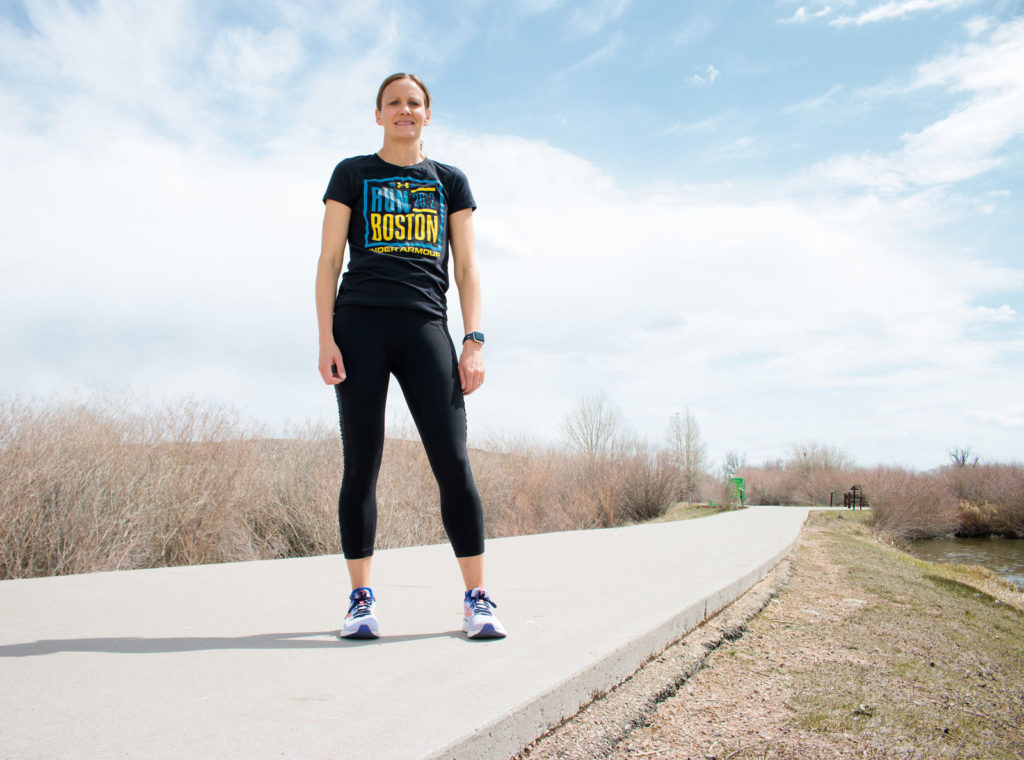
It was a not-so-subtle reminder of the journey Jenn has been on. While she avoided any longtime traumatic brain injury, there have been dozens of doctor visits, physical therapy sessions, and she now wears a hearing aid in her left ear. Barker also undergoes regular treatments for back pain.
“Running is a happy place for me … so, I’ll do whatever it takes because it’s not something I’m willing to give up,” she proclaims.
And likely the most positive moment of her running career — so far — came on April 18, 2022 when she realized her dream of running the Boston Marathon, which she finished in 3 hours and 39 minutes.
“I just couldn’t believe I was finally there,” Barker says. “It’s been a long time coming, and a long road for a lot of reasons. And the accident definitely didn’t help. I was just so grateful to finally be there and experience it. It was everything that I hoped it could be.”
And six days after running in Boston, Barker finally ran the Salt Lake Half Marathon with her friends Holly and Kira – the race they were training for together in March 2019. It was cold and rainy, and running more than 39 miles in less than a week wasn’t great for her back. But so be it.
“It always ends up going back to the sheer gratitude I have for how things ended up,” she says with a smile. “I might have to go to physical therapy quite a bit and wear a hearing aid everyday, but I’m still able to run and take care of my kids and live my life.”
By Jeff Hunter ’96
Portrait photos of Michael McKnight by Levi Sim
Videos by Taylor Emerson



